I'm interfacing the BT139-600 TRIAC with this MOC3051-M Opto-triac. I want to build a snubber circuit for the TRIAC as shown in the MOC3051M opto-triac's datasheet @ page 8, figure 12.

The load will be a 230V AC, 4A motor. What are the recommended characteristics of the Rs, Cs and MOV in that schematic (the type of the resistor and capacitor, power specifications, voltage limits)? Would this components be a good pick for the snubber?
Rs: 33 Ohm 5W wirewound resistor
MOV: JVR14N431K 275V AC MOV Varistor
Do I also need a snubber for the triac driver?